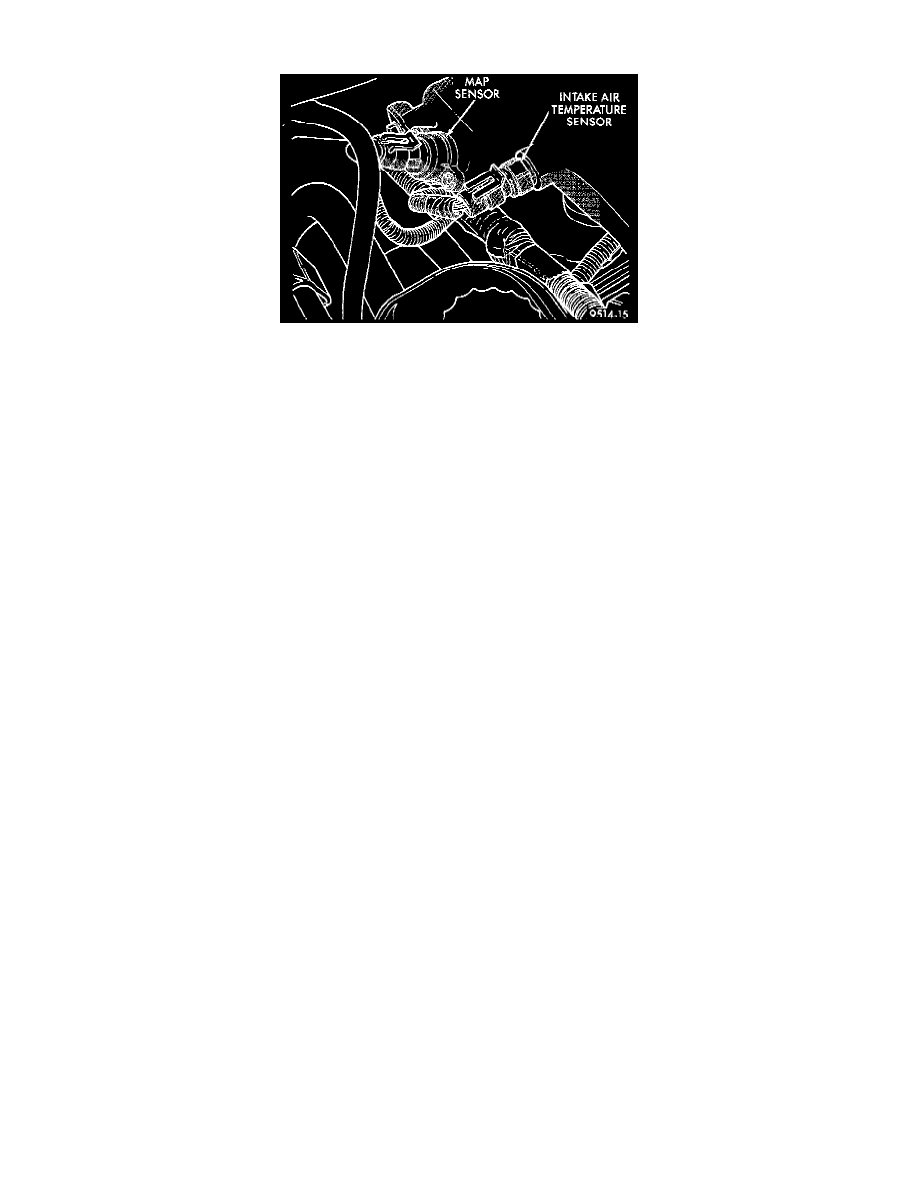Stratus V6-2.5L VIN H (1997)

Manifold Pressure/Vacuum Sensor: Description and Operation
Fig. 5 Intake Air Temperature Sensor And MAP Sensor
OPERATION
The MAP sensor reacts to absolute pressure in the intake manifold and provides an input voltage to the PCM. The PCM interprets the MAP sensor
input as engine load.
The input voltage level supplies the PCM with information relating to ambient barometric pressure during engine start-up (cranking) and engine
load while its operating. The PCM uses this input along with inputs from other sensors to adjust air-fuel mixture.
The PCM supplies 5 volts direct current to the MAP sensor. The MAP sensor converts intake manifold pressure into voltage. The PCM monitors
the MAP sensor output voltage. As vacuum increases, MAP sensor voltage decreases proportionately. Also, as vacuum decreases, MAP sensor
voltage increases proportionately.
At key on, before the engine is started, the PCM determines atmospheric air pressure from the MAP sensor voltage. While the engine operates, the
PCM determines intake manifold pressure from the MAP sensor voltage. Based on MAP sensor voltage and inputs from other sensors, the PCM
adjusts spark advance and the air/fuel mixture.
The sensor is mounted on the intake manifold Fig. 1. The sensor is connected to the throttle body or intake manifold with a vacuum hose and to
the PCM electrically
CIRCUIT OPERATION
From the Powertrain Control Module (PCM), circuit K6 supplies 5 volts to the Manifold Absolute Pressure (MAP) sensor Circuit K6 connects to
cavity 61 of the PCM connector.
Circuit K1 delivers the MAP signal to the PCM. Circuit K1 connects to cavity 36 of the PCM connector.
The PCM provides a ground path for the MAP signal (circuit K1) through circuit K4. Circuit K4 connects to cavity 43 of the PCM connector
